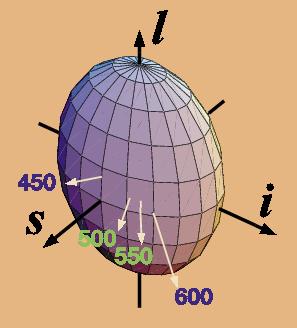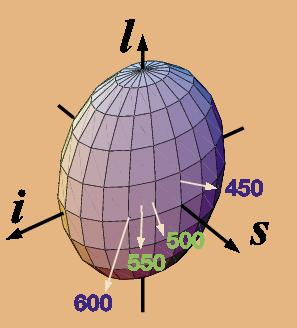



The property of chirality in nuclei is generated by the angular momenta. Uni-axial nuclei are spherical, and can exhibit no chirality. Bi-axial nuclei can be either prolate spheroids (squashed football shaped) or oblate spheroids (rugby ball shaped), and there is no scope for chirality in those either. Chirality is a general property of tri-axial nuclei. Here the two un-paired nucleons can move in orbits that are both perpendicular to each other and to the spin of the nucleus core, resulting in three momentum vectors that can be orientated in two different ways, a left-hand form, and a right-hand form. The only nucleus yet observed to exhibit chirality is neodymium-135. It manifested itself as two closely-spaced energy levels of the nucleus. The small difference in energy levels of the two forms, left and right-handed, means that it can and does flip between one form and the other at a particular frequency that can be detected, albeit very feebly. In effect the nucleus is wobbling.
![]()
![]()